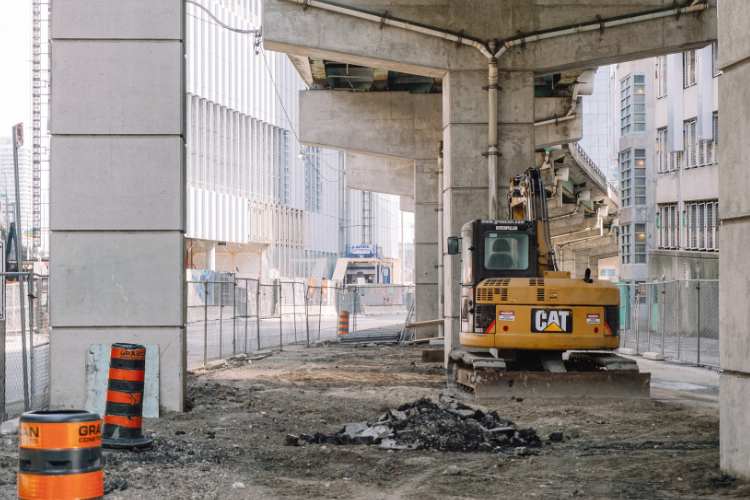For subcontractors, surpassing $25M in revenue is a rewarding stage that signifies operational finesse and strong strategic leadership. At this stage, subs find themselves less in the trenches and more focused on steering the company towards continued growth. In the final part of our series, construction consultant Jerry Aliberti from Pro-Accel gives an overview of the challenges, operational changes, and hiring demands that come with this broad revenue tier.
Table of Contents
The $25-40 Million Range: A Well-Oiled Machine
Once companies arrive here, owners begin to kick their feet up and they aren’t working 60-hour weeks. At most, they’re signing checks and taking cursory looks at the finances since they’ve created a team to manage the day-to-day. The owner putting out fires should be a thing of the past, and if they’re still doing it, it likely signals they’re having problems delegating. GCs are seeking the business out and the owner has a clear vision for how to achieve the growth they want. They can more easily pay off debt. If the company is sitting on the right foundation, operational efficiency is high, leadership is strong, and cost tracking is locked down.
Key Challenges at this Stage:
- Increasing Overhead: A challenge at this size is the sheer amount of overhead the business is accumulating. This forces an owner to be even more selective about the work the business takes on. The profit should justify the amount of overhead the business is paying for. Additional overhead at this stage is administrative employees to key roles in the back office, full-time shop personnel to keep equipment up and running, insurance policies, additional office space, and more.
- Maintaining Customer Satisfaction: Customer satisfaction may decline the larger a business gets. The company is hiring more people, and the customer experience is becoming less personal. Work on standardizing the processes for interacting with customers. This will help remove any confusion, resulting in better project success and customer satisfaction.
- Lack of Operational Meetings: The bigger the company, the greater the need for consistent communication across leadership. All companies of any size, especially this size, should have monthly company-wide operational meetings. These meetings consist of all project PMs, Supers, and high-ranking leaders. Leaders come together to understand what’s happening across jobs, including project progress, resources needed, and project outlook. “A major complaint I hear from many employees is they don’t know the direction of the company and what is currently happening. This is a great space for the owner and leadership to align the team and reiterate goals,” Aliberti said.
- Growing Employee Turnover: The larger the company, the more employees start to feel like a needle in a haystack. The owners should try to maintain personal touches with employees or encourage leaders and managers to do so within their own teams. A lack of connection can contribute to attrition, which can have a negative impact on an organization’s culture. Additionally, as the company grows, employee’s skills must grow to offset the additional complexity in the day-to-day operations. Provide ongoing training for employees so they can handle these changes and feel confident in their role.
Operational Changes to Consider:
- Consolidate Scopes: In the journey to a $100M (if that aligns with the company’s goals), the sub may arrive at a point when they need to start expanding their scope and absorbing some of the work of nearby trades. This allows them to offer a more comprehensive package to the GC, which lets them charge more. The owner may want to consider whether becoming a self-performing GC would work for their business. In doing so, they may sub out more work, and assume some additional risk.
- Diversify Between Commercial and Public Work: When the company is younger, it makes the most sense to stay within its “bread & butter” jobs. But in the interest of growth, a sub will want to expand into other forms of work. For example, as the economy underperforms, private money tends to dry up. However, at the same time, the government pumps more money into public works projects.
- Pursue Multimillion Dollar Jobs: The sub is no longer bidding $500k projects at this stage. The overhead on these smaller jobs is fairly consistent with the overhead on larger jobs, so it’s worth pursuing larger projects. A general rule of thumb is don’t bid on more than 20% of your annual revenue on a single project. You don’t want to put all your eggs in one basket.
Hiring at This Stage:
Most part-time and fractional employees are no longer necessary. The sheer size of the business demands full-time attention and commitment in most roles. It will need:
- A full-time CFO
- A full-time HR person or team
- A full-time marketing person or team
- A COO
- A full-time business development person or team
The $40+ Million Range: Acquisition and Expansion
At this stage, the sub has a large payroll, a large backlog, and a large budget. That also means higher risk and higher insurance/workers comp coverage. One of the owner’s biggest pain points at this stage is their ability to keep the business invigorated with the culture and vision they initially outlined. The company can have more subcultures and siloes, and quality control becomes difficult.
In this stage, the company should be running smoothly and under capable management. Owners focus on relationships and future growth. It might also involve passing the company to the next generation. Smart strategies, long-term vision, and market dominance define this phase.
For a company to grow further at this stage, it may be easier to acquire smaller companies and cover additional territory. Acquiring another business involves a comprehensive understanding of several key aspects. First, it requires thorough due diligence to assess the target company’s financial health, liabilities, assets, and overall value. It’s essential to evaluate the strategic fit between the company and a potential acquisition target, ensuring the acquisition aligns with the company’s long-term goals and can be seamlessly integrated into existing operations. Understanding the cultural fit between the two companies is crucial to ensure smooth transitions and maintain employee morale. Additionally, financial considerations such as financing options, deal structure, and potential synergies should be carefully analyzed to ensure the acquisition is financially viable and beneficial.
Operational Changes to Consider:
- Technology to Automate Where Possible: With a larger team and established processes in place, evaluate if there are ways the business can automate redundant work or help employees streamline their processes. Using technology instead of performing tasks manually can also help establish consistency.
- Develop an Exit Strategy: This is another conditional recommendation. If the owner plans to exit, they should develop that strategy as many years in advance as possible to get ahead of any potential hiccups. Exit strategies take many years to accomplish. Don’t underestimate the work that needs to be put into this process
- Continue to develop leadership and employees: As in any stage, training is critical to keep employees sharp. Tap into younger talent who show the capabilities of being a great leader and nurture those skills immediately.
- Full-time cost control department: Projects are larger and more complex, which can result in far more profit loss on projects. Consider having a full-time cost control staff properly trained in both estimating and project management and have them dedicated to continually monitoring costs on projects.
Hiring at This Stage:
Part-time and fractional employees are no longer necessary. The sheer size of the business demands full-time attention and commitment from the staff. This phase needs:
- A CEO to step in and take over the owner’s past duties as they transition out of the business’ day to day.
- A full-time COO, if not already in place.
- Cost Control Manager
Each stage of growth brings its own set of problems and opportunities, but with careful planning and focus, a subcontractor can thrive and scale effectively. Whether the business just hit $25M or the sub is looking to break the $100 million mark, understanding and addressing these challenges is key to long-term success.







